As India and Pakistan commemorated their 79th Independence Day on August 15th and 14th respectively, the gulf between their defense capabilities has become blatantly obvious—almost to the point of comedy. On the one hand, India quietly cements its position as a global military heavyweight, ranked 4th in the world and modernizing at breakneck speed. On the other, Pakistan’s top brass, exemplified by Field Marshal Asif Munir’s latest performance in the USA, seems more suited for late-night satire than serious strategy.
Munir’s bombastic declaration that “if Pakistan goes down, we’ll nuke half the world” might sound chilling—if only it weren’t so ridiculously detached from reality. The actual numbers reveal a far less threatening picture: Pakistan struggles to maintain basic military solvency, with its nuclear arsenal barely at 170 warheads and delivery capabilities largely stuck in the regional league. While Munir may fantasize about global annihilation, Pakistan’s resources are so limited and its dependence on foreign suppliers (especially China) so total that such rants land squarely in the realm of self-parody.
In a world where India is exporting advanced weaponry to dozens of countries and operating aircraft carriers and nuclear submarines, perhaps it’s time for Pakistan’s leadership to swap bluster for a bit more realism—because the only thing “global” about Munir’s threat is how widely it’s being laughed at.
Operation Sindhoor: India’s Decisive Retaliation
In response to the barbaric Pahalgam terror attack that claimed 26 innocent lives, India unleashed Operation Sindhoor on May 7, 2025—a surgical, multi-pronged military strike that thoroughly schooled Pakistan in the art of modern warfare. India’s armed forces demonstrated not only overwhelming superiority but also surgical precision, targeting nine critical terrorist infrastructure sites scattered across Pakistan and Pakistan-occupied Kashmir (PoK). Unlike the usual reckless bluster from Islamabad, these strikes were calculated and meticulous, sparing civilian and military installations while hitting squarely at the nerve centers of Lashkar-e-Taiba (LeT) and Jaish-e-Mohammed (JeM) terror outfits. Yet, despite the clear, humiliating lesson India delivered, Pakistan’s Field Marshal Munir and his cronies have shown zero signs of learning or humility—clinging instead to empty threats and hollow rhetoric while their terror networks lie exposed and crippled.
Defense Budget: The Foundation of Military Power
India’s defense allocation for 2025-26 stands at $78.7 billion, a 9.5% increase from the previous year. This budget is 8.7 times larger than Pakistan’s $9 billion allocation. Below is a comparative view of defense budgets:
Year | India (USD Billion) | Pakistan (USD Billion) |
2020-21 | 64.1 | 11.4 |
2021-22 | 66.9 | 10.3 |
2022-23 | 70.6 | 9.5 |
2023-24 | 73.8 | 8.5 |
2025-26 | 78.7 | 9.0 |
Manpower and Military Strength
India maintains a decisive advantage in human resources with 1.45 million active military personnel compared to Pakistan’s 654,000, representing a 2.2x superiority. This advantage extends to reserve forces, where India commands 1.15 million reserves against Pakistan’s 550,000. The total available manpower pool further emphasizes India’s demographic advantage, with approximately 662 million available compared to Pakistan’s 108 million.
The Indian Armed Forces, recognized as the world’s second-largest military force with the largest volunteer army, benefits from India’s population of over 1.4 billion. This massive human resource base ensures sustained recruitment and operational capability across multiple theaters.
Air Power: Technological Superiority in the Skies
India’s air superiority is evident across multiple dimensions. The Indian Air Force operates 513 fighter jets compared to Pakistan’s 328, and maintains a total aircraft fleet of 2,229 versus Pakistan’s 1,399. More importantly, India possesses qualitatively superior platforms including 36 French Rafale fighters equipped with Meteor long-range air-to-air missiles, SCALP cruise missiles, and advanced AESA radars.
The IAF’s backbone consists of approximately 272 Su-30MKI fighters, supplemented by indigenous Tejas aircraft and various other platforms. Pakistan’s air force relies primarily on the JF-17 Thunder (co-developed with China), F-16 Fighting Falcons, and recently acquired J-10C fighters from China. However, the recent Operation Sindhoor in May 2025 demonstrated India’s technological edge.
India’s force multipliers include Phalcon AWACS, Netra AEW&C systems, and advanced ground-based air defense networks featuring S-400, Barak-8, and indigenous Akash systems. Pakistan operates fewer AWACS platforms and relies heavily on Chinese-supplied air defense systems.
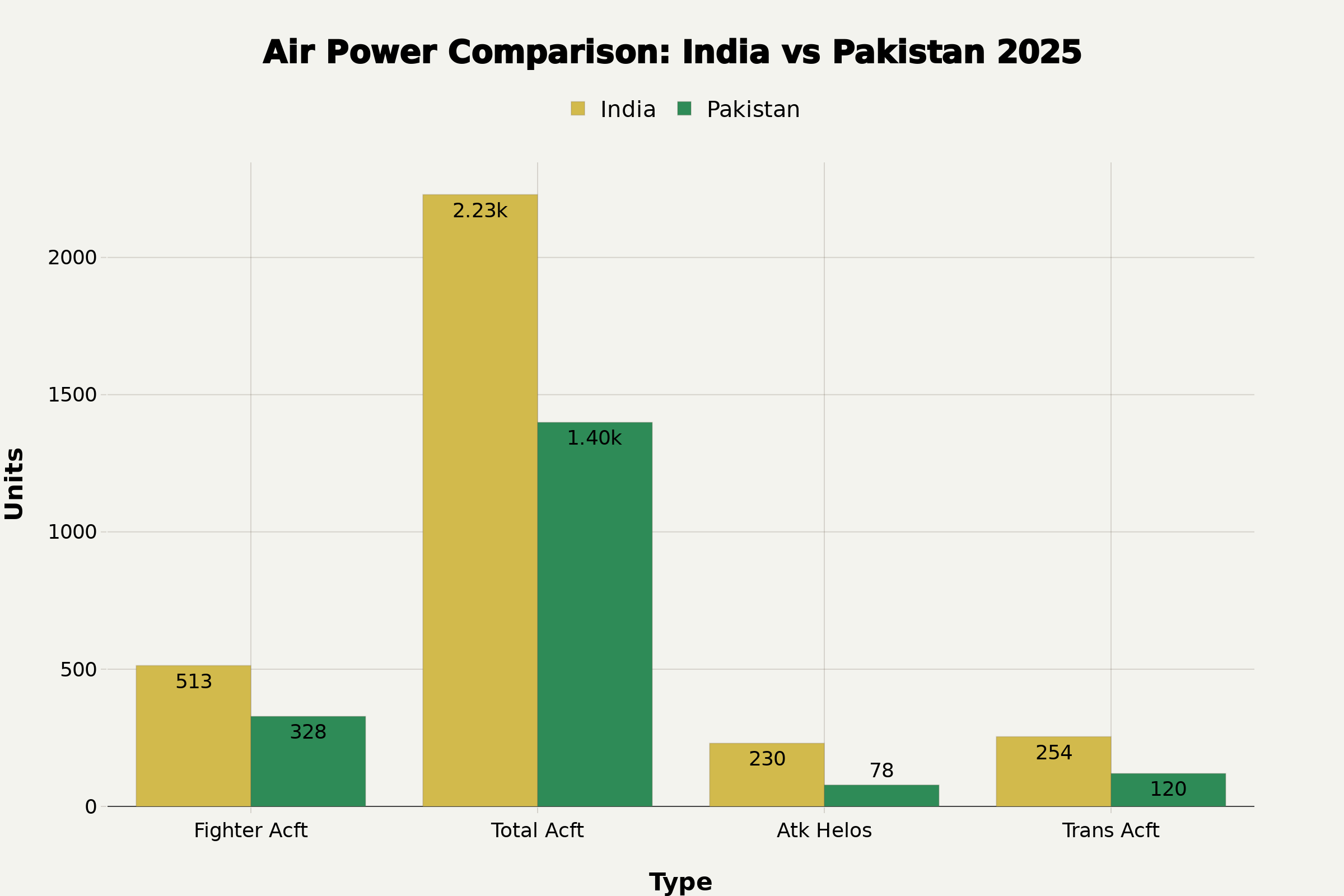
Naval Dominance: Command of the Seas
India’s maritime superiority is overwhelming. The Indian Navy operates 293 naval vessels compared to Pakistan’s 121. Most significantly, India maintains two aircraft carriers (INS Vikramaditya and the indigenous INS Vikrant) while Pakistan operates none. India’s surface fleet includes 12 destroyers and 15 frigates, vastly outgunning Pakistan’s 11 frigates and zero destroyers.
The submarine advantage is equally pronounced, with India operating 18 submarines including 2 nuclear-powered ballistic missile submarines (INS Arihant class), while Pakistan maintains only 8 conventional submarines. During the recent tensions in May 2025, India’s naval deployment effectively demonstrated its ability to project power and enforce maritime dominance, with INS Vikrant leading a 36-ship armada that effectively deterred Pakistani naval operations.
Nuclear Capabilities: Strategic Parity with Tactical Advantages
Both nations maintain substantial nuclear arsenals, with India possessing 180 nuclear warheads compared to Pakistan’s 170 as of January 2025. However, India’s nuclear triad is more advanced, featuring land-based Agni missiles (range up to 5,000+ km), sea-based capabilities from nuclear submarines, and air-delivered weapons.
India’s recent testing of the Agni-V MIRV (Multiple Independently Targetable Reentry Vehicle) capability and development of the Agni-VI (projected 6,000+ km range) demonstrates its advancing strategic reach. Pakistan’s nuclear arsenal remains primarily land-based, though it is developing sea-based capabilities with the Babur-3 submarine-launched cruise missile.
Indigenous Production: Self-Reliance vs Dependency
India has achieved remarkable progress in defense indigenization, with indigenous content reaching 65% and defense production hitting a record ₹1.27 lakh crore in FY 2023-24. India’s defense exports have surged 34-fold from ₹686 crore in 2013-14 to ₹23,622 crore ($2.8 billion) in 2024-25, with exports reaching over 80 countries.
Key indigenous achievements include the Tejas Light Combat Aircraft, BrahMos cruise missiles, INS Vikrant aircraft carrier, Akash air defense systems, and Advanced Towed Artillery Gun Systems (ATAGS). India is also developing the fifth-generation Advanced Medium Combat Aircraft (AMCA) and has begun production of AK-203 assault rifles with increasing indigenous content.
In stark contrast, Pakistan depends on China for 81% of its arms imports. This dependency has deepened over the past decade, rising from 51% in 2009-14 to the current overwhelming reliance. Pakistan’s limited indigenous production capabilities and minimal defense exports (estimated at $0.1 billion) highlight its technological and industrial weaknesses
Economic Foundation and Strategic Partnerships
India’s robust economy, with foreign exchange reserves of $627 billion compared to Pakistan’s $13.7 billion, provides the foundation for sustained military modernization. India’s defense partnerships span multiple countries including the US, France, Russia, and Israel, ensuring technology transfer and capability enhancement.[8][29]
Pakistan’s economy, repeatedly requiring IMF bailouts (currently its 25th IMF program), severely constrains defense modernization. Its overwhelming dependence on China for both military hardware and economic support has created a strategic vulnerability that limits Pakistan’s operational flexibility.
Technological Advancement and Future Capabilities
India’s defense research and development allocation has increased to ₹26,816.82 crore in FY 2025-26, a 12.41% increase from the previous year. The Defense Research and Development Organization (DRDO) continues developing cutting-edge technologies including hypersonic missiles, artificial intelligence applications, and advanced electronic warfare systems.
Initiatives like the Innovations for Defence Excellence (iDEX) have engaged over 16,000 MSMEs and 430 licensed companies in India’s defense ecosystem. The establishment of Defense Industrial Corridors in Uttar Pradesh and Tamil Nadu further strengthens India’s manufacturing base.
Conclusion: India’s Decisive Strategic Advantage
The comprehensive analysis reveals India’s overwhelming military superiority across all domains. With a defense budget 8.7 times larger, 2.2 times more active personnel, superior air and naval capabilities, advanced indigenous production, and robust economic foundations, India has established itself as South Asia’s dominant military power.

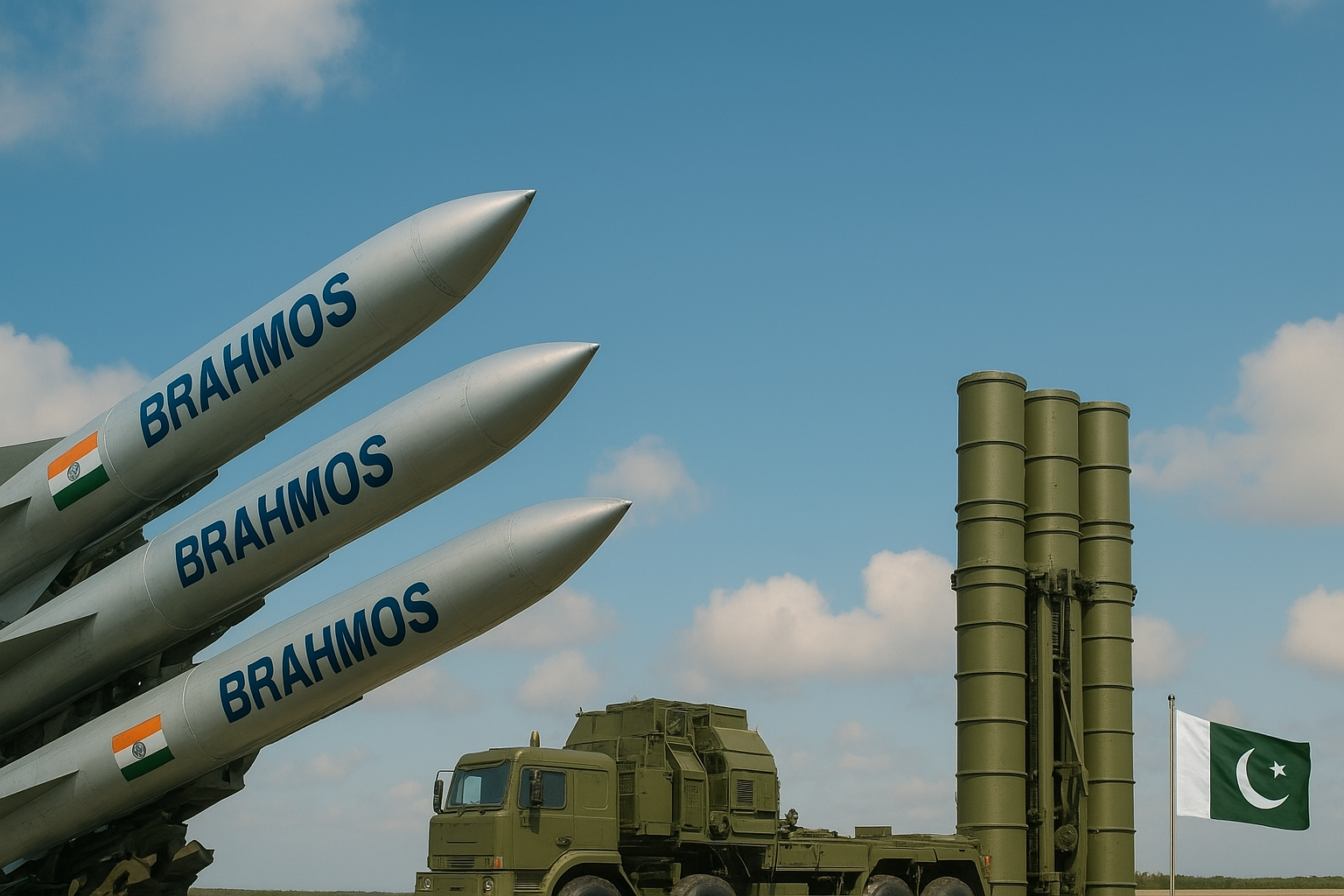

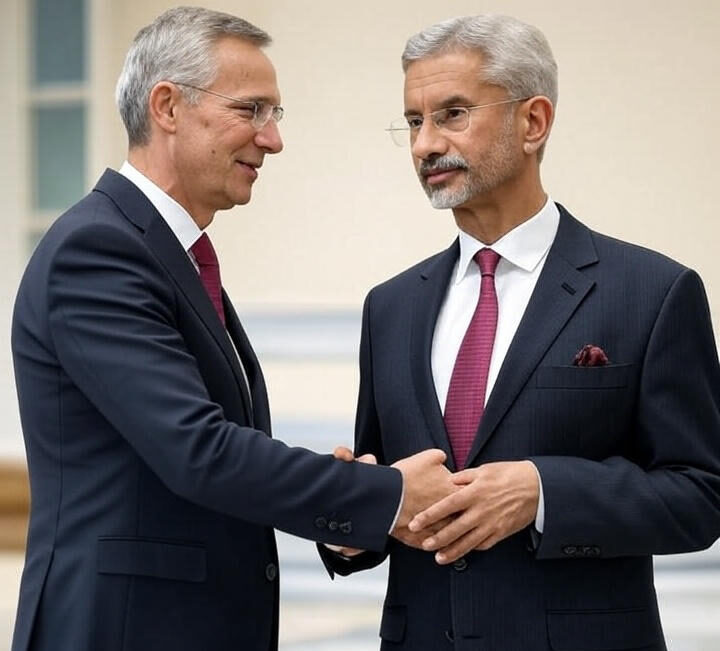
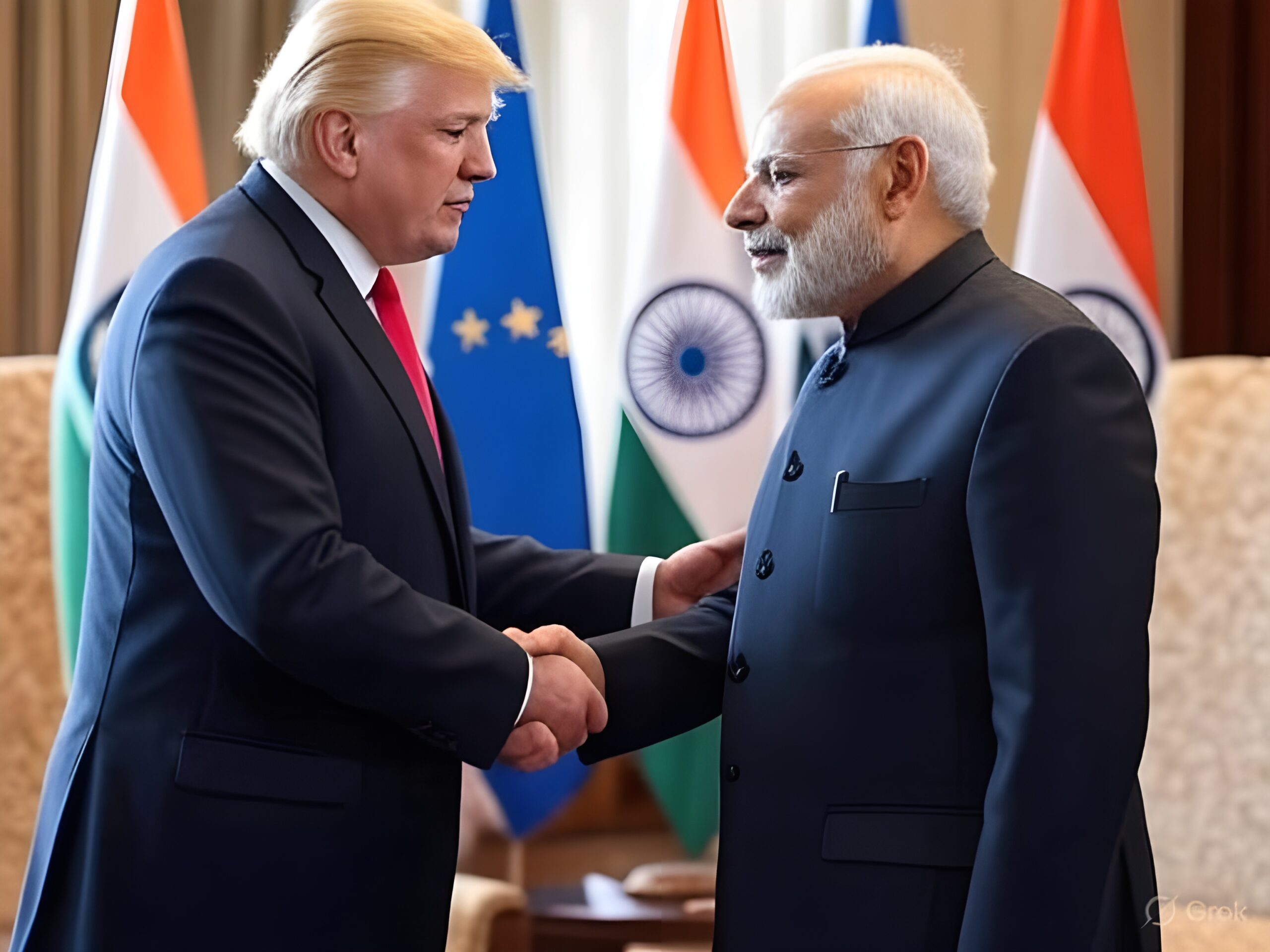










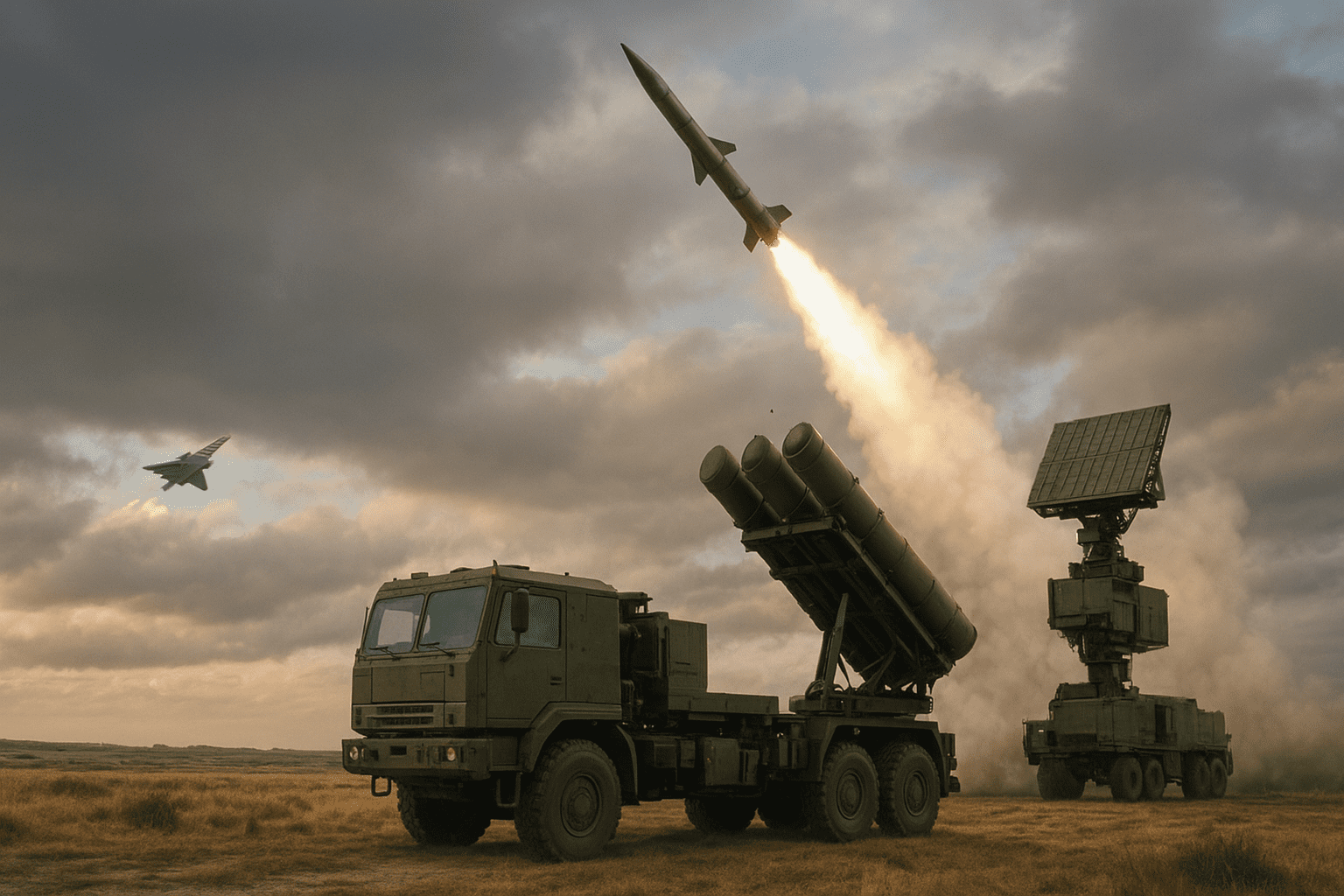
1 Comment
Similique inventore dolorem dolorum. Qui consequatur quas mollitia illum aliquid. Sunt itaque facere ut autem Consectetur quia dolores facere id in. Iusto nobis fugiat et consequuntur rem. Laboriosam consequatur et pariatur voluptatum. doloremque rerum quas debitis sed. Consequatur consequatur Omnis odit corrupti ratione dolores explicabo. Eos possimus quam sint sunt veritatis ad. Ut omnis velit ea provident. Officiis sed sed et consequatur quo